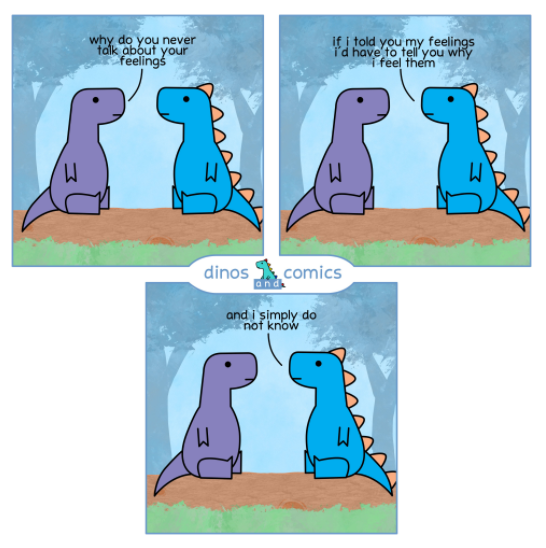Introduction
Simon talked about how “there’s a whole new world defining and redefining itself as we go through this experience of the pandemic” and in this webinar we wanted to think about the way that our relationships are developing within the classroom during these times – whether we’re teaching behind a mask or in an online environment. Simon also mentioned the fact that this is a shared, global phenomenon and so we also wanted to think about ways we can connect with other ELT professionals outside the classroom – to share experiences, both positive and negative, of these challenging times. “Through sharing and connecting, we can feel less alone and we can feel more accompanied” – and this idea of connection if one of our main aims for the TEFL Development Hub.
Ideas for building relationships with and between learners
- Emotional literacy
One of the issues a lot of us are facing now is with ‘reading the room’ – it became more complicated in the online environment, but as well now it can be tricky with everyone wearing masks.
Make use of emoticons (you can get lots of free ones from pixabay.com) as these can give us a wider range to work on. Paul said that one of his students has printed off her own set of emoticons and put them on sticks so she can show how she’s feeling, which is a lovely idea and also allows learners to personalise their own classroom materials.
Simon talked about creating a space to allow learners to share – or allowing them not to share, as well. Often with the communicative approach, we always want to ask follow-up questions, but actually allowing learners to say how they’re feeling, without needing to explain why. Lisa said she’s taught her students to say, “just because” which is a wonderfully genuine response to the question too.
Other ideas from the chat included using anonymous polls for learners to share how they’re doing (Paul), an emotional thermometer – having scales for different emotions (Borja) and getting students to play a song which sums up their mood of the day (Olivia).
For younger learners, you can create characters using fruit and veg – ideas stolen from Chris! – as this can allow learners to express their creativity. And Angie suggested using the Mr Men and Little Miss books as well.
When we’re teaching from behind a mask, it can be useful to help learners develop their emotional literacy with their eyes and body language. This is also helping learners to develop skills to use outside the classroom.

Fiona and Vicky mentioned using sign language or Makaton – another way that we can communicate with our learners non-verbally.
- Learners’ responsibilities
Our younger learners love to feel involved in the class and have a job to do. Think about the jobs you can have in a socially-distanced classroom, such as changing who sits nearest the teacher each lesson or a handshake creator – someone who creates a little 4-move action to do during a brain break. This again allows the learners to bring their own ideas into the class and be responsible for creating something everyone will do during that lesson. Adam suggested Mask Police as well – you may have had a class sheriff in the past who checked people were on task or not speaking L1 unnecessarily, the job evolves too in these changing times!
- Virtual journals
This could be an option for learners who want to share, but don’t feel comfortable doing so in front of the class. Set up an individual google document for each learner and ask each person a personalised question at the start of the class. It could start out as a part of your lesson routine and then see who’s interested in continuing – even if only one person wants to, it’s another opportunity to connect on a personal level. Please remember to check your school policy about communicating with learners on an individual basis in this way.
- A rose, a thorn and a bud
Idea 1 – students write three things: something they’re happy about (rose), something they’re unhappy about (thorn) and something they’re looking forward to (bud). Their partner then guesses which is which – and this might be very easy to do, but it allows them to learn more about their classmates and develop conversations from it.
Idea 2: write as many things as you like (that you’re happy, unhappy or excited about) and your partner identifies which category each falls into. This gives the learners more choice as to what they share, rather than being forced to have one thing in each category.
- Class connections
Have learners think of a way they connect with every other person in a class – but their connections can’t be things everyone has in common (e.g. we all speak English or we’re all at the same school). They can be very simple connections, such as sharing the first letter of their name or something about their hobbies, where they live…anything.
Carmen asked about getting feedback on activities like these and as it’s important to show we value the activities that we set our learners to do, the feedback on this task could be, “Tell me about one of your connections”, rather than forcing them to say everything.
Other bits and bobs
One question which came up was about the use of L1 – should we allow learners more space and time to use their own language to express how they’re feeling?
Also, we did a webinar before on Building Rapport – ideas for the start of term and activities to use throughout the year. This is now only available on the Hub in the Videos (Media) tab.
Tim suggested learners share where they are (if they want to) or a picture of a place which means something to them and make use of the virtual background.
Ideas for connecting with other ELT professionals
- Padlet
This is a great place to save links to websites or leave documents. This is the one created by some of the Active Language teachers. You can set up the wall in different ways – for example, this one is organised in columns so you can store ideas within different categories.
Lisa said that they use Google Drive as a space to share and store ideas.
- PD Winter Festival
This is something happening at Active Language this year, as a way for teachers to think about their personal professional development over the term. Each teacher will be sharing an idea – something they’ve done in their lessons this term, or something they’ve learnt about the profession. Although this is being organised through the school, you could easily get together with a few colleagues to create your own PD Festival.
- Finding places and spaces to connect
Within the Hub, we’ll be holding a live event every Thursday but there are also other opportunities to connect with other teachers in different environments.
For example, on Twitter, there’s a #SIGTweetMeet every Tuesday – different SIGs take turns to ‘host’ the TweetMeet for three weeks (thanks Ceri for confirming details!) and whilst there are questions to focus the chat, there’s also lots of freedom to just pop along and say hello.
If you’re into teacher training, there’s a monthly #CELTAchat on Twitter, again with a focussed theme for the chat. A lot of what they talk about is also relevant to the Trinity CertTESOL (and to teacher training in general).
- ELT events calendar
Are you missing the free pens from conferences this year? I know I am! But also really miss the buzz of attending a conference in-person. However, one of the benefits of the pandemic is that many organisations have moved their conferences online, meaning that we can attend many events that we wouldn’t have been able to go to before. That said, we also need to be wary of FOMO – we don’t need to attend everything that’s on offer!

